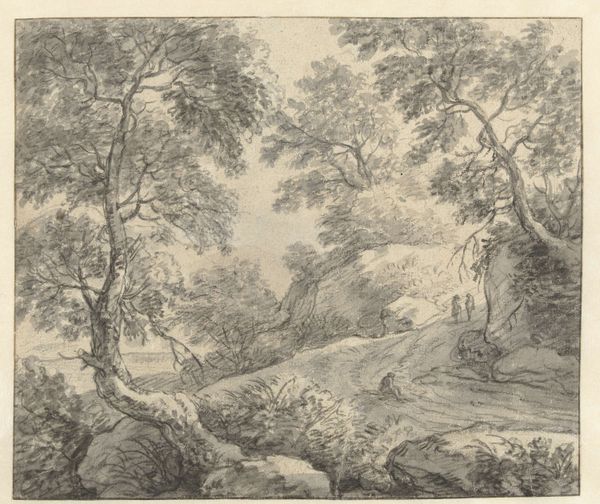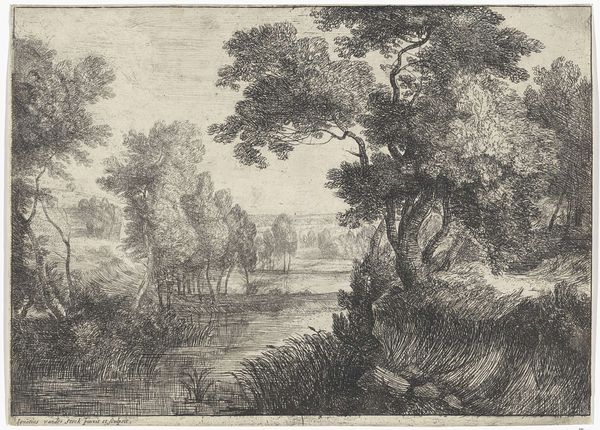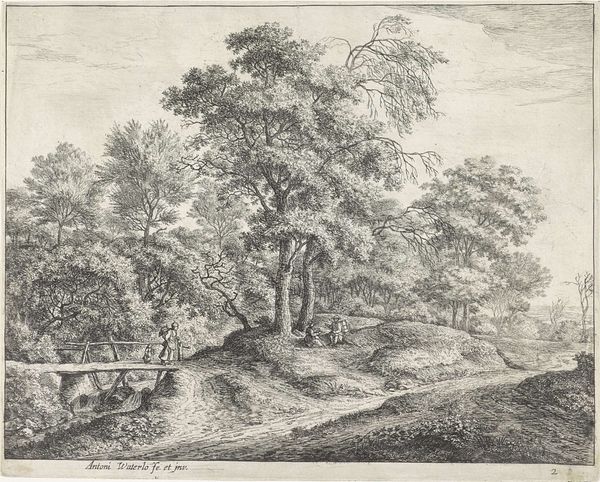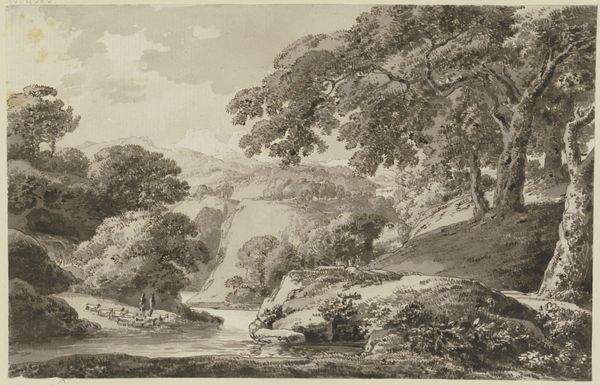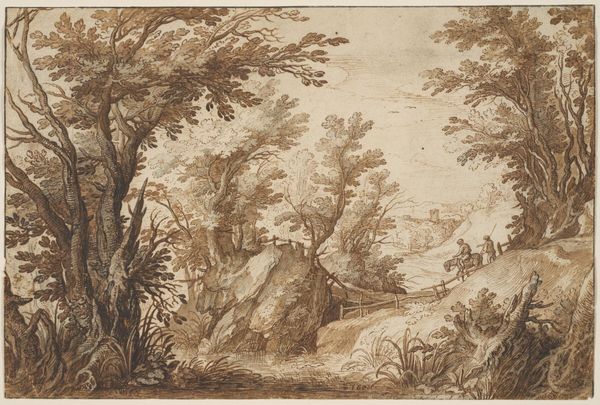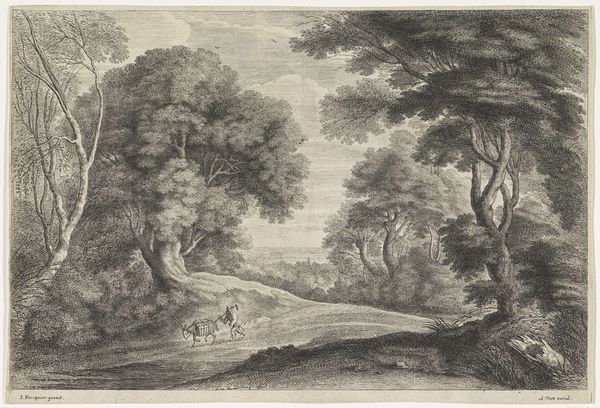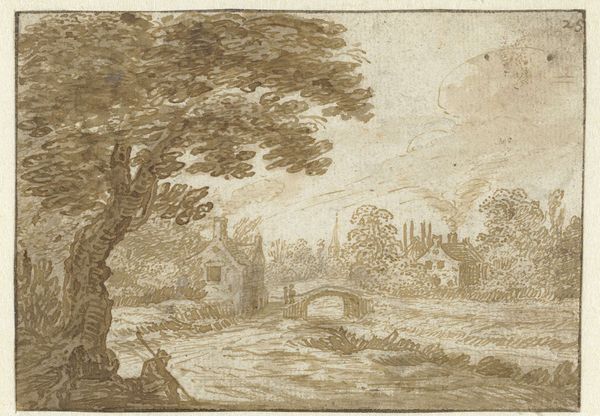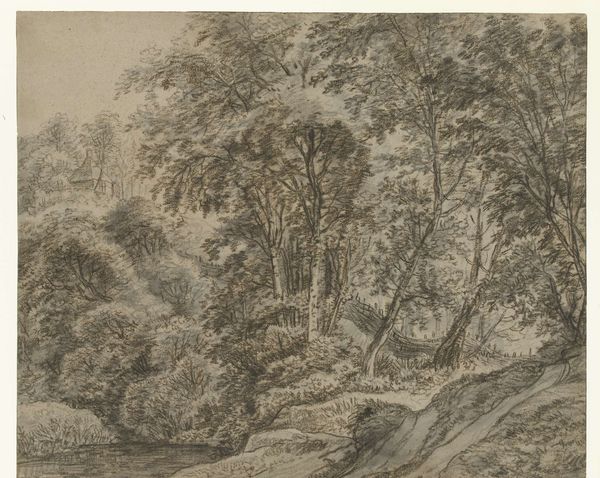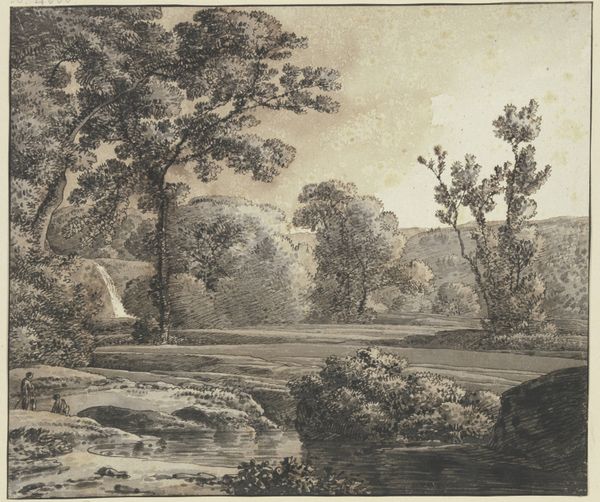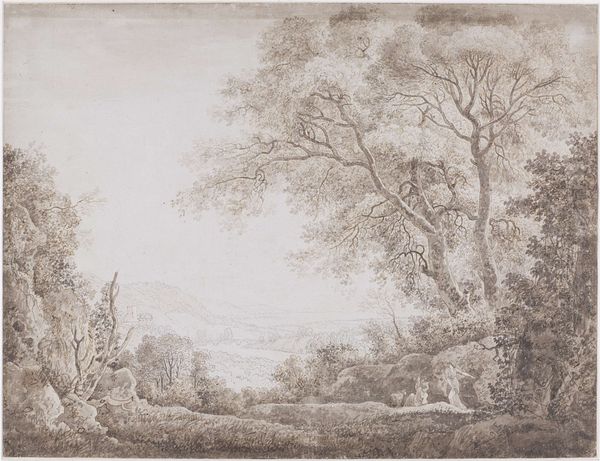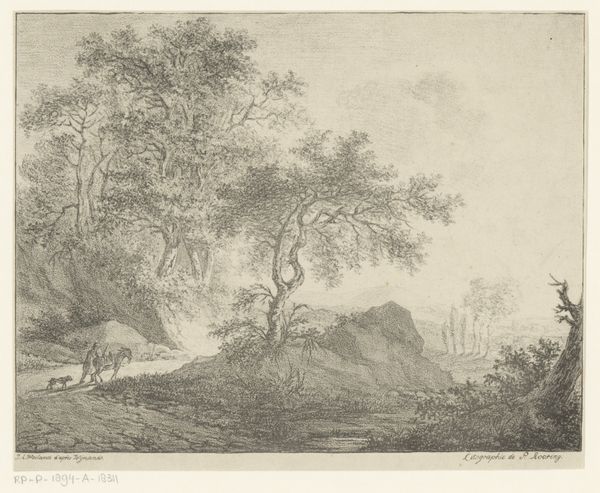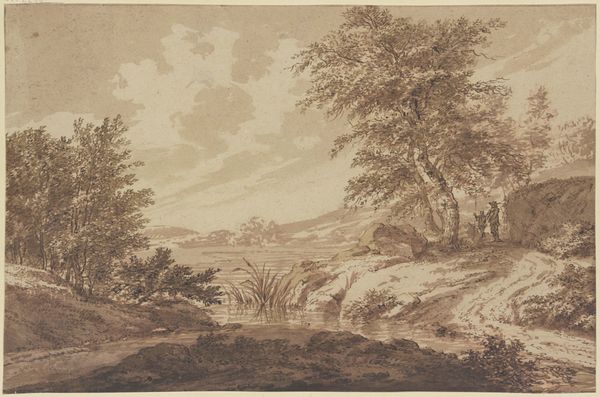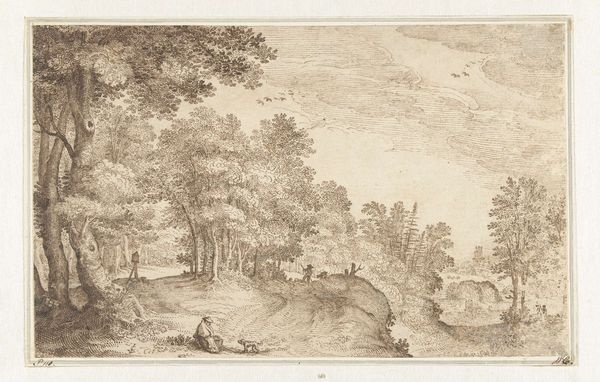
drawing, paper, ink
drawing
baroque
landscape
paper
ink
northern-renaissance
Dimensions: height 147 mm, width 192 mm
Copyright: Rijks Museum: Open Domain
Anthonie Waterloo made this landscape drawing with pen in the Netherlands sometime in the 17th century. The image presents an idealized version of nature, a common theme in Dutch art of this period. We see a serene mountain scene with lush trees, a flowing stream, and figures crossing a bridge, all rendered in delicate strokes. But what's interesting is how this image reflects the social values of the time. In the 17th century, the Netherlands experienced a period of economic prosperity and cultural flourishing. Landscapes became a popular subject for art, as they celebrated the beauty and abundance of the Dutch countryside. Yet, these landscapes also served as a form of national identity, reminding viewers of the wealth and stability of the Dutch Republic. As historians, we can look at archival documents to understand the social and economic conditions that influenced the production and reception of this artwork, deepening our understanding of its meaning and significance.
Comments
No comments
Be the first to comment and join the conversation on the ultimate creative platform.
